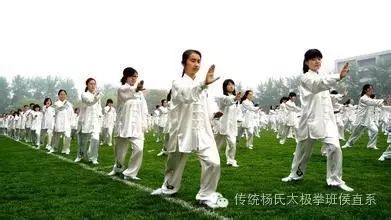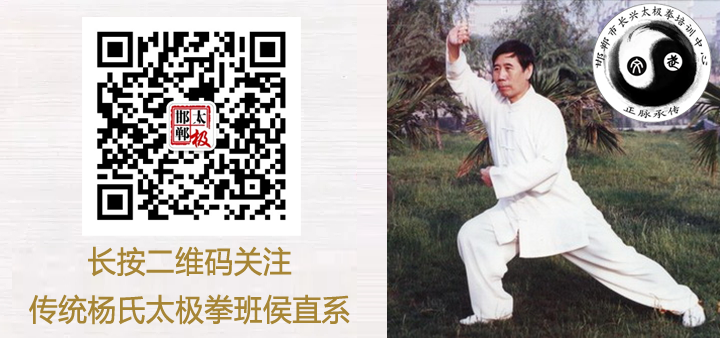1. Key Point One for Practicing Tai Chi: Upward Suspension, Central Relaxation, and Downward Sinking01. Upward Suspension refers to the top of the head being suspended, with a light pull upwards, which is often misunderstood as a downward pressure. The goal is to keep the base of the brain (pituitary gland) in a relaxed state, aiding the body’s endocrine system. Additionally, it helps to gently lift the vertebrae, as if the body is a puppet being supported by a hand, which not only invigorates the spirit but also prevents the body from becoming limp due to relaxed shoulders and a sinking lower body.02. Central Relaxation means that the upper body below the shoulders should be as relaxed as possible. During practice, any movement of the arms should be done with the intention of relaxing the shoulders, even when engaging in push hands or daily activities. This helps to avoid raising the shoulders and minimizes the use of brute force. Over time, this will allow the shoulders to achieve a relaxed state, facilitating the sinking of Qi (vital energy) into the lower dantian (energy center), and naturally opening the spine, leading to a sensation of connection in the arms. When combined with the long-term training requirements of the third point, this will naturally result in a cohesive force that arises from the ground.03. Downward Sinking means that during transitions (i.e., shifting weight), one should focus on sinking the tailbone. Over time, this will naturally relax the waist and hips, allowing entry into the practice of internal energy. At this stage, the internal Qi will gradually sink to the soles of the feet, merging with the earth’s energy, establishing a strong foundation and enhancing strength. The more stable the lower body, the stronger the force that can be exerted.04. Practicing Tai Chi is a continuous process of changing force. The above three requirements are indispensable. A competitive mindset should be avoided unless one does not wish to delve into its depths. If you are serious about mastering Tai Chi, you must learn to endure losses and maintain a humble heart; otherwise, true mastery will remain out of reach.2. Key Point Two for Practicing Tai Chi: Use the Waist and Hips to Drive the Limbs01. There are actually only four movements of the hands: lifting up, lowering down, pressing together, and opening the hands. The prerequisite is to guide the relaxation of the shoulders with intention (this is how the hands connect with the body). Whether the hands move left, right, or backward, it must be led by the rotation of the waist (more precisely, the hips), with the arms passively following. In other words, the hands lead the hips, and the hips drive the hands; the same applies to the feet, where the force generated by the hands and feet is also controlled by the hips.02. To complete the training of using the waist and hips to drive the limbs, two major principles must be followed in the early stages:(1) Strictly adhere to Tai Chi stepping methods: when moving forward, the heel should touch the ground first; when moving backward or sideways, the toes should touch first. It is crucial to have two supporting points to shift the center of gravity.(2) When the feet move, the hands move; when the feet stop, the hands stop. If the feet do not move or the waist does not turn, the hands cannot move automatically. If the feet or waist stop moving, the hands must also stop; otherwise, it is considered moving the hands unnecessarily.03. With long-term training of using the waist and hips to drive the limbs, chaotic hand movements will naturally diminish, and the force generated will not be isolated but rather a cohesive spring-like force from the whole body. Furthermore, with consistent practice, the so-called folding force, spiral force, or silk-reeling force will naturally develop without the need for deliberate effort.

3. Key Point Three for Practicing Tai Chi: Distinguishing Between the Empty and Solid Feet01. When first learning Tai Chi forms, it may be difficult to distinguish between empty and solid feet, but the concept should be understood. Initially, the steps may be larger, but as skill increases, the steps will gradually narrow to shoulder width, aiding in the clear distinction between the empty and solid feet, as well as facilitating quick and agile movements.02. Some may think that distinguishing between the empty and solid feet is not that important, and that various step ratios (e.g., 4:6, 3:7, 2:8, or 1:9) are acceptable. Larger steps may look more impressive in demonstrations or competitions, which can help open the hips. However, understanding the importance of this distinction is crucial—internal Qi can more easily sink from the empty foot to the ground, and when the empty foot transitions to a solid foot, the Qi that has sunk into the empty foot can be transformed into upward force through the Yongquan (Kidney 1) point, which is why this distinction holds a key position in Tai Chi.03. However, in addition to the distinction between empty and solid feet facilitating the transformation of Qi into force, the density of the bone marrow and the flexibility of the tendons are also two major factors affecting the rate of transformation. Therefore, a balanced diet, regular sleep patterns, avoiding smoking and excessive alcohol, and moderate exercise are all closely related. In other words, mastering the correct practice methods, along with adhering to health principles and consistent practice, are key to success.4. Summary of Key Points for Practicing Tai Chi: Aim to Sink the Internal Qi Downward!01. Relax the shoulders; whether practicing Tai Chi or in daily life, avoid raising the shoulders to prevent the internal Qi from being lifted.02. When raising the arms, do not lift above shoulder level, and ensure the elbows point downward.03. In both Tai Chi practice and daily life, the entire body should be relaxed, especially avoiding unnecessary force. When raising the arms or lifting objects, only exert enough force to maintain the position; any excess force should be guided to relax.04. Stand upright. If the body does not remain vertical to the ground, certain parts will become stiff, leading to Qi stagnation.05. Distinguish between empty and solid feet. The clearer the distinction, the more relaxed the waist and hips will be, allowing the upper body’s Qi to sink down through the governing vessel to the feet, merging with the earth’s energy, establishing a strong foundation and enhancing strength.

If there are any copyright issues, please contact the original author through the backend.The articles published are for learning and reference only. Please practice under the guidance of a professional teacher.

Official website: http://www.yunshuiwang.com



